Hill’s Tramroad
ON a fine Autumn day when the distant sun is pale, the smoke-scented air is crisp, and the low-lying mist weaves its weird magic on high hilltop and down beckoning vale, a walk on Hill’s Tramroad from Blaenavon to Llanfoist serves as a gentle reminder of how the formidable patience and calm assurance of mother nature conquers all.
This area of untamed splendour was once a sight of the heaviest of industry and backbreaking toil. The turf was torn, tracks were laid, and carts carrying iron rattled along pulled by horse and man to Llanfoist Wharf, where Blaenavon’s hugely profitable export would be shipped via Newport Docks to far-flung corners of the globe.
Named after Blaenavon iron master Thomas Hill, the Tramroad saw schools, pubs, chapels, and entire communities spring up like strange flowers along its weaving and winding route.
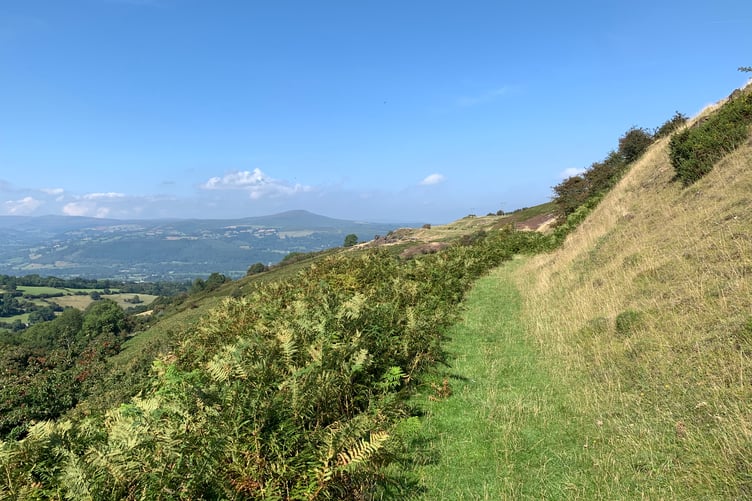
The villages of Pwll Du and Garnddyrys are no longer there but the remains of the forges, quarries, and houses where people, who to quote Alexander Cordell, “Lived their lives on the edge of a golden valley,” are still visible to anyone willing to take a ramble through the past and along this remarkable industrial highway.
A journey upon Hill’s Tramroad is a path that once walked is never forgotten. As you head From Torfaen in the direction of the now sadly defunct Lamb and Fox Inn, which at one time was one of the highest pubs in Wales, and towards the lost village of Pwlldu it’s difficult not to feel transported back to another time and place.
In its heyday, Pwll Du, which means ‘black pit,’ stood defiant and isolated on an exposed hillside, 1,500 feet above sea level. The community of roughly 300 people consisted of hard-working miners and their families. The residents mainly lived in two rows of terraces. One was called Upper Rank and the other Lower Rank. They were often nicknamed ’Short Row’ and ‘Long Row’.
Pwll Du had chapels, a shop, a bakehouse, a washhouse, and two pubs, the Lamb Inn and the Prince of Wales, which was unusual because it stood right on the border of Monmouthshire and Breconshire and had a bar in each county.
At 1.5 miles the Pwll Du tunnel was the longest underground network on any British horse-drawn tramroad. Trams were hauled from the Blaenavon Ironworks through this tunnel en route to the Garnddyrys Forge where the pig iron would be converted into bars, rails, and plates.
The tunnel’s entrance has long since been blocked up with masonry and like the rest of Pwll Du lies, for the most part, buried and forgotten.
The village was declared a slum in 1960 and demolished. The residents were reluctantly shipped to new council houses in Govilon.
Today when the lonely wind whistles through the bracken and heather and a soul can see nothing but sky and county in all directions, it’s difficult to imagine this area being anything other than a still and restful place of birdsong, but the scattered stones and whispered memories of a lost village beg to differ.
Keep following the path of Hill’s Tramroad, and you’ll eventually come across the ancient route from Blaenavon to Govilon known as Rhiw Ifor (Ifor’s track) before the tramroad leads you to the remains of Garnddyrys Forge and the village which grew up around it.
It was Garnddrys which inspired Alexander Cordell to write Rape of the Fair County.
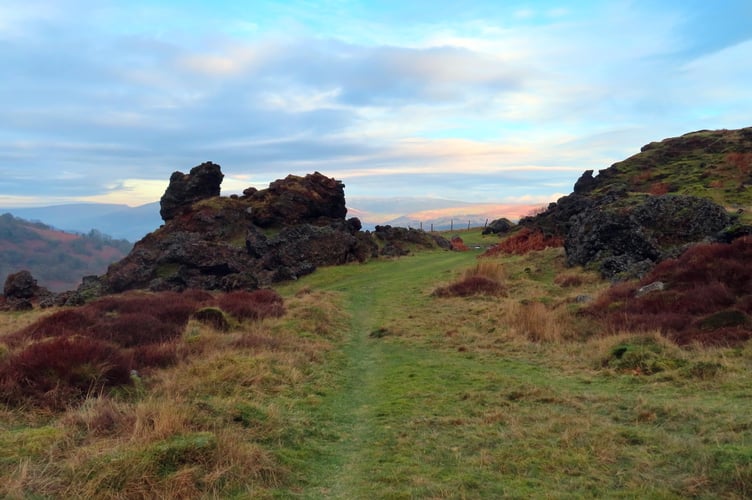
Like Pwll Du, the houses and pubs of Garnddyrys are no more but their isolated remains, in particular, the village school where children learned to read and write before starting work, often as early as six or seven years of age, are a poignant reminder of what once was.
From Garnddyrys you can follow the tram road across the Blaenavon Road and along the front of the Blorenge to the ‘Big Drop,’ which will take you on the steep incline towards Llanfoist Wharf and journey’s end.
Once again, when you walk through the leafy shade and towering trees that surround the last leg of Hill’s Tramroad it’s difficult to imagine how heavy industry had previously transformed this area, as the stone sleepers are the last remaining scar which hints at this wooded area’s past.
A brief walk through the murk and dampness of the tunnel which passes beneath the canal, accompanied by the ever-present gurgling of the Devil’s Gully on the right, will lead to a brief hike up the steps towards the Mon and Brec which offers a fine view of the mountains and the contrasting sweep of modern civilization.
All in all the perfect place for a rambler and a gambler to take a breather on a nearby bench before deciding where to head next.
The Mon and Brec Canal
For well over 200 years the Monmouthshire and Brecon canal has cast its spell on all those who have walked, jogged, or cycled on its tow-path, or boated sedately and serenely on its 35 miles of watery wonder.
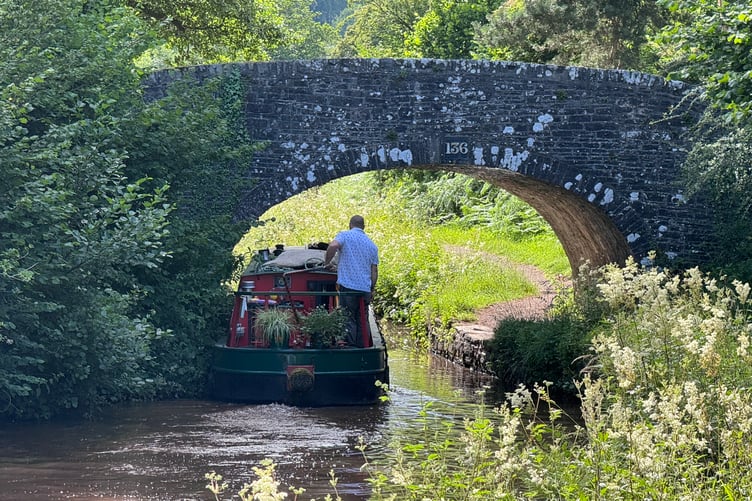
As you travel through the bridges, locks, and tunnels of the affectionally named Mon and Brec, its languid and leisurely atmosphere will chill even the hottest of hot-heads.
Its length and breadth are untouched by crass commercialism and the stress-inducing pace of modern life. As it makes it soft slow and serpentine through some of the most sublime scenery and views Monmouthshire has to offer you’ll unwind quicker than a time-traveling clock on steroids.
It’s ironic that a man-made waterway tailor-made to meet the savage demands of the Industrial Revolution has since been transformed into a place of perfect peace and idle pleasure.
It was originally built in the late 18th century under the supervision of engineer Thomas Dadford as two separate canals: the Brecknock and Abergavenny Canal, and the Monmouthshire Canal.
The two canals were eventually linked and today it runs from the Pontymoile Basin until the journey’s end at Brecon’s Dadford’s Bridge.
The Great Western Railway eventually put pay to the canal’s usefulness, and to the hard-nosed industrialists and iron masters, it became a mere afterthought to their ruthless brand of capitalism.
Yet over the years a lot of TLC and restoration have turned this former road of utility into a path to paradise.
And today when you journey upon its long stretches of sweeping solitude and blessed silence, broken by the occasional birdsong and hail of a fellow traveller, it's hard to imagine the vast amount of coal iron, and limestone which were once ferried up this industrial corridor.
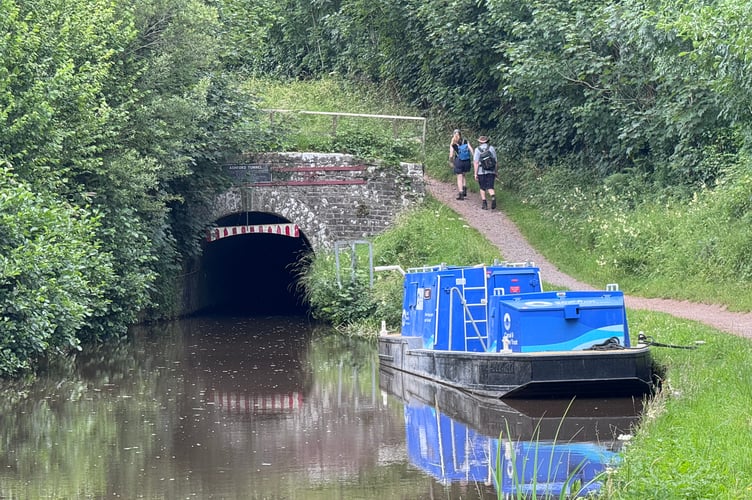
The Mon and Brec is littered with sites of particular interest such as the Ashford Tunnel, Lanfoist Wharf, Goytre Wharf, and bridges with such memorable names as Solomon’s, Crown, Skew, and Humphreys, it also passes through some of Monmouthshire's most enduring villages, and a part of it lies in the Blaenavon World Heritage Site.
All in all, it’s well worth a cruise, a stroll, or even a leisurely ride at any time of year.
The old railway line
Before the motor car began choking the climate and tying the world up with roads, if you wanted to get from A to B there was the old iron horse, or as it was more commonly known, the steam train.
Parts of Monmouthshire once formed an impressive segment of the Merthyr, Tredegar, and Abergavenny Railway. In its heyday, this was one of the most impressive and severely graded lines in the British Isles.
Created by the heavyweight industrialist Crawshay Bailey, who was determined to create a route between Abergavenny and Merthyr no matter what natural obstacles stood in his path, the railway overcame steep slopes, deep valleys, and an array of spectacular twists and turns to ensure the sound and smell of steam became a popular sighting in such towns as Abergavenny and villages like Govilon, Gilwern, and Clydach.
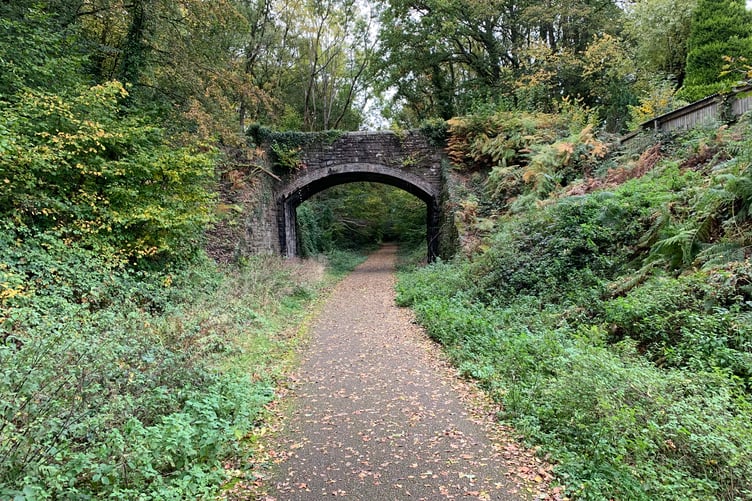
Its tracks have long since been torn up, the steam has evaporated into thin air, and the haunting cries of the old engines have been silenced by the study and monotonous hum of the motorway.
Yet where once there was the hiss of steam and the distinctive clatter of wheels heading down the track, you’ll now find a stillness and solitude that makes for a wonderful walk.
The old railway line is now hugely popular with walkers and cyclists and is the ideal place to meander.
Along the way, you’ll find lots of relics to remind you what an engineering miracle once weaved its serpentine way through this area, and as you stroll over and under bridge, through the abandoned track’s densely wooded sides, and admire the outstanding views, you’ll wonder why on earth we no longer travel in such a pleasant and leisurely style.
Clydach Gorge
In the years before Clydach Gorge was raped and ravaged by the industrialists, many believe a certain young man who would go on to change the world was so seduced and enraptured by its natural beauty and mystical otherness, he decided to immortalise it and its peculiar inhabitants in verse.
The man was William Shakespeare and the play was Midsummer Night's Dream.
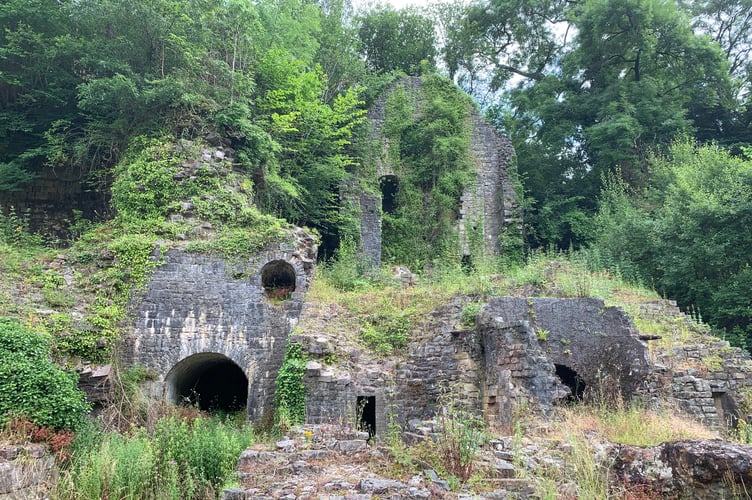
Visitors to the gorge today cannot help but notice its ironworks, lime works, quarries, railroads, tramroads, and great bridges. They linger in the sprawling landscape like relics of some brutal alien civilisation. Their mute abandonment serves as a stark reminder of how all endeavour, innovation, and industry will all one day be rendered obsolete by nature and time.
Like in Shakespeare's day, it is now the waterfalls, the caves, ancient woodland, and the unspoiled and untamed sense of that which is hidden and unknown which brings people to the gorge.
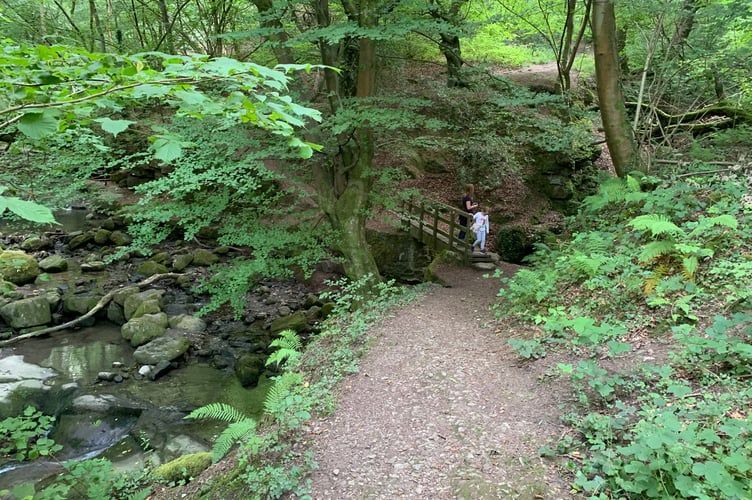
In the English tongue, they call them the Fair Folk but in the Land of our Fathers, they are known as the Tylwyth Teg.
The Tylwyth Teg live underground or in water and in Wales, their number is said to be great, especially in the area of the Clydach Gorge where Devil's Bridge, Puck's Valley, and Shakespeare's Cave await the intrepid adventurers wishing to immerse themselves in this curious and atmospheric area far removed from the tyranny of time.
A soul alone in the Gorge, amongst its cascading waterfalls, towering trees, and eerie silence, can well imagine how the young bard took inspiration from such a setting. Could the Puck of Midsummer Night's Dream be based upon the shapeshifting "Pwca" who was said to terrorise those unwary and unwise enough to cross their path when walking in the Gorge?
Were things revealed to Shakespeare’s eye in this high and lonely place that no imagination, no matter how nuanced and spritely, could conjure?
And then there are the ironworks. Staring accusingly out of the landscape like a wronged giant, how many futures did it blight and lives did it claim when its roar filled the valley and cast a shadow that threatened to blot out the sun?
The Gorge is a place of contrasts, of darkness and light, a place that carries its scars like an old soldier, but above all, it is a place that once visited, lives long in the imagination.
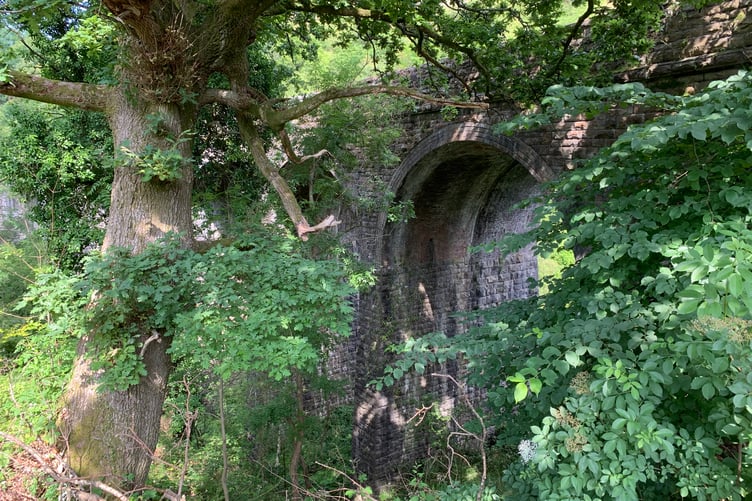
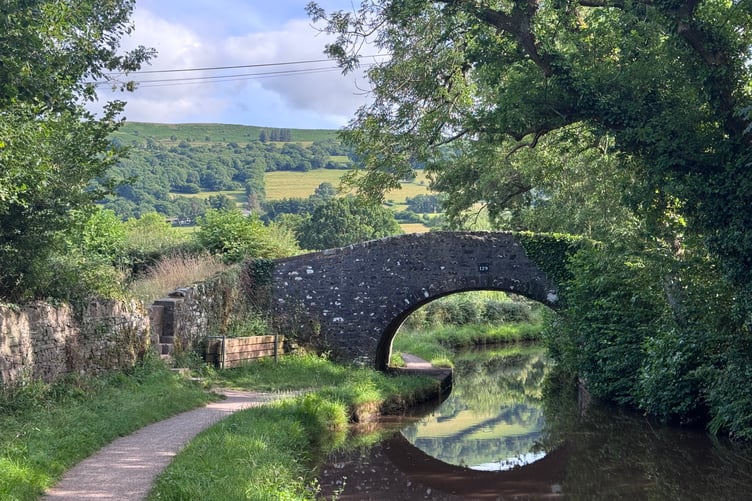


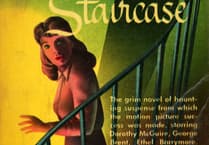
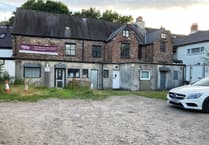
Comments
This article has no comments yet. Be the first to leave a comment.